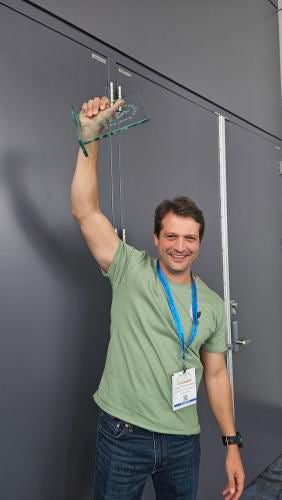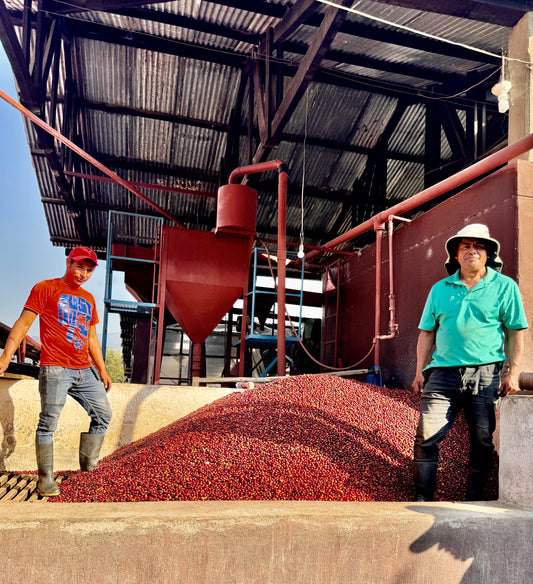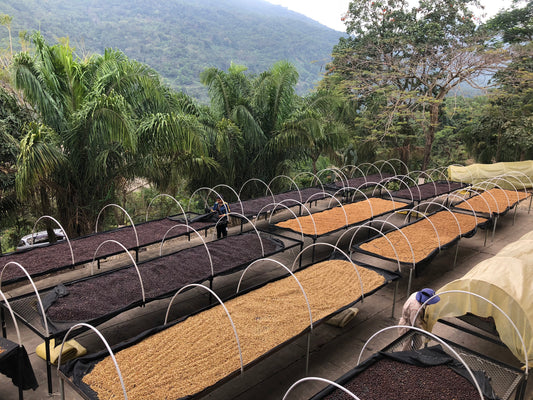How to Brew a Perfect Espresso

There’s nothing worse than going to a renowned coffee shop only to receive an espresso drink that’s bitter and undrinkable. Poorly made espresso-based drinks are more common than you might think. Even the best beans, espresso machine, and grinder can’t guarantee a good espresso. Follow these tips to ensure greater consistency in perfect espresso shot every time.

A big challenge for cafe managers and owners is getting their large team of baristas to make good-tasting espresso. A lot of newbie baristas don’t know what to look for when dialing in espresso and lack the confidence to calibrate it. This is why we offer complimentary ongoing training and consultation for our wholesales clients.
By putting certain practises in place, you can show your whole team how to pull a perfect shot of espresso. First, we’ll show you how to lead an espresso tasting session with a team of baristas. Then, we’ll show you how to ensure the espresso is always running well.
The building blocks of good espresso
It may sound obvious, but you need to start with great coffee and great equipment to make great espresso. Make sure you have all of these in place first before you troubleshoot your espresso.
- Beans
Make sure to source roasted beans from a high-quality, specialty coffee roaster. They should have an emphasis on ethical sourcing, meticulous roasting, and freshness.
- Espresso machine
A high-quality espresso machine with enough pressure and stamina is crucial for great espresso. We recommend the Slayer espresso machine, which was produced by the fine folks here at Fratello!
- Grinder
A good espresso grinder allows you to micro-adjust the grind setting. It should have a timed doser to provide consistency. We recommend Mahlkonig espresso grinders.
If you have all of that already, let’s get into it!

Leading an espresso tasting with your team
It’s always a good idea to do an espresso tasting session with your team. This allows you to answer any questions and try different espresso shots side-by-side for comparison. When guiding your team through a tasting, here are some common things to look for.
- Sweetness
While not all coffees have a sweet profile, you should aim for a sweet shot. Sweetness is detected on the tip of the tongue. Unlike an unpleasant sour flavour, you’re looking for a sweetness akin to fruit or sugar.
- Lack of bitterness or sourness
A good shot of espresso should never taste unpleasantly bitter or sour. You can assess this more broadly when you try the espresso by asking yourself, “Is this pleasant?” “Is this acceptable to serve?”
Bitter and sour notes can be part of the inherent flavour profile of the coffee, like rich cocoa and lemon. Don’t get confused by desirable flavour attributes.
- Flavour notes
Get your team familiar with the flavour wheel. It’s not cheating to fill your head with all the possibilities of what coffee can taste like. It helps your team by giving them a vocabulary to describe coffee.
TIP: It’s easier for newbie baristas to taste coffee that’s cooled down and/or diluted with a bit of water.
Creating an espresso calibration system
After you’ve done your initial group tasting session with your team, it’s time to create a calibration system.
The best way to calibrate espresso is by tasting it and adjusting it as needed. However, most newbie baristas won’t have the skills or the confidence to do this. This method also takes more time, and when you’re trying to move a lineup, it isn’t practical. A calibration system is easy-to-follow, keeps your coffee tasting great at all times, and doesn’t disrupt your flow.
Not all coffee is the same, but as a general rule of thumb, there’s a certain espresso recipe to follow. When it comes to brewing parameters for espresso, you want to start with a dry weight of 18 grams, a wet weight of 36 grams (ie. actual brewed espresso), and a brew time of 28-30 seconds. If you brew your espresso and it doesn’t fit within these confines, you can tweak the dose and the grind setting of the coffee.

How to pull a perfect shot of espresso, step-by-step:
- Pop the basket out of the portafilter, and zero it out on a digital scale. Grind your beans from your timed espresso grinder, and weigh it. If it weighs below 18 grams, increase your dose by a few milliseconds. If it weighs above 18 grams, decrease your dose. Don’t worry if you’re off by 0.5 grams.
- Once you have the right weight, evenly tamp your espresso with 30 lbs of pressure.
- Have a timer ready to countdown from 30 seconds. Grab a clean shot glass or mini metal pitcher, place it on the scale, and zero it out.
- Place the scale and the glass under the group head, and begin brewing your espresso. Immediately start your 30-second timer.
- At the 30-second mark, stop the shot and read the wet weight on the scale. If the wet weight isn’t 36 grams, make some changes and start over. If the wet weight is below 36 grams, make your grind coarser. If it’s above 36 grams, make your grind finer.
Make sure to post the espresso parameters (ie. dry weight, wet weight, brew time) where staff can see it. Have your team calibrate the espresso several times a day: once first thing in the morning, at mid-morning, and in the afternoon. For accountability, you can set up a checklist on a marker board, and have staff initial their calibrations.
Other factors affecting espresso flavour
Getting the right dose and weight is important when making good espresso, but it’s not the only thing to be aware of. Other things greatly affect the flavour of espresso. Here are some common factors:
- Tamping
Make sure your team is tamping properly. An uneven tamp or a cracked puck can result in uneven extraction, and thus, a sour, undrinkable espresso. Check out this video to make sure your team isn’t committing any tamping faux-pas!
- Temperature and humidity changes
The temperature and humidity in your cafe can instantly change how your espresso pours. If the weather suddenly changes from rainy and cold to sunny and warm, recalibrate your espresso.
- Cleanliness of equipment
A dirty espresso machine can make your coffee taste off if you’re doing everything else right. Make sure your team is cleaning the espresso machine and portafilters every night with Cafiza. Additionally, make sure your team is wiping the portafilter baskets with a dry rag between espressos. Have them purge the group heads between pours, too.
Give it your best shot
Espresso can be intimidating for new baristas who lack skills and confidence. You can’t expect them to know everything right off the bat. The more effort you put into standards and procedures, the more likely it is that your team will get on board.
It doesn’t take long to gain a reputation as a no-fail, sure-shot espresso bar. Before long, your customers will notice, and they’ll be lining up for more. So do a little planning, schedule that espresso tasting with your team, and knock it out of the park!
We know that espresso can be a complicated beast. With decades of experience in the specialty coffee world, we have all the tools to make your cafe a success. Book a consultation call with us by emailing us at info@fratellocoffee.com. We’re here to help!





